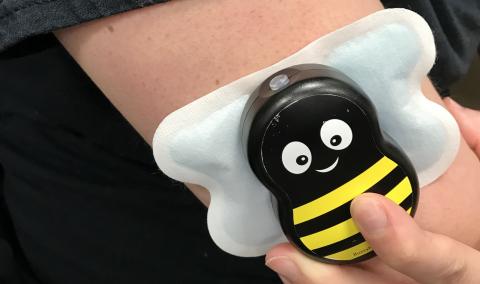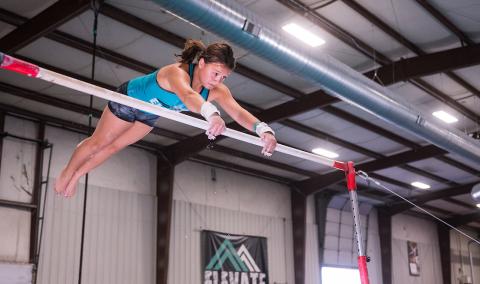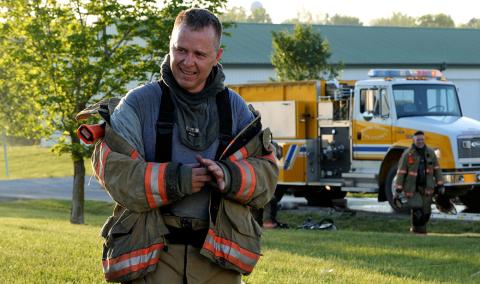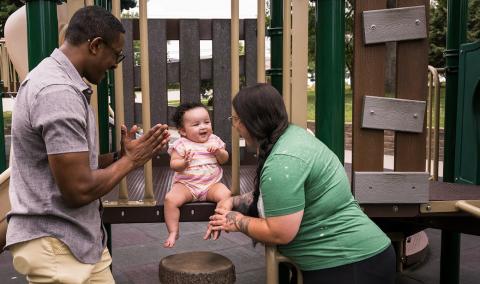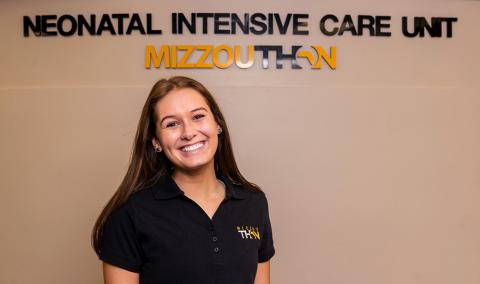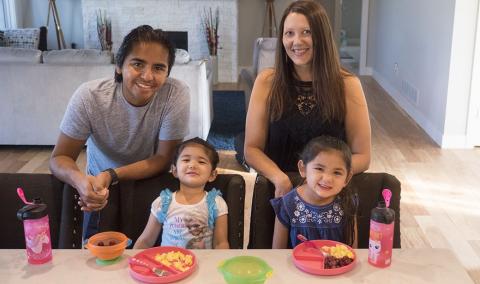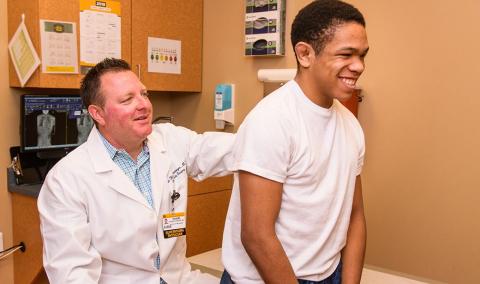At MU Health Care, our experts offer the latest minimally invasive techniques and multispecialty care to correct pectus excavatum, helping your child breathe easier and feel more confident.
If your child has a “sunken chest,” they could have a chest wall disorder called pectus excavatum. This condition occurs when your child has an abnormal growth of cartilage in the chest wall that pushes the breastbone (sternum) and ribs inward, causing the chest to appear “caved in.”
At Children’s Hospital, we use a team approach to diagnose and treat chest wall disorders like pectus excavatum. Our specialized team includes:
- Pediatric surgeons: Oversee your child’s treatment plan.
- Pediatric nurse practitioners: Manage and assist with the overall care of your child before, during and after treatment.
- Pediatric pulmonologists: Treat lung issues related to a sunken chest.
- Pediatric cardiologists: Help manage heart issues caused by a sunken chest.
- Pediatric physical therapists: Offer chest-specific stretches and exercises to help improve your child’s muscle strength and posture.
- Pediatric radiologists: Help with imaging and evaluating the severity of the disease.
- Pediatric neurologists: Can check for nerve issues like numbness.
We work together to design a personalized treatment plan for your child or teen. If surgery is the best option, we offer minimally invasive procedures and evidence-based protocols that can help your child recover quickly.
Signs and Symptoms of Pectus Excavatum
Your child may have pectus excavatum, also called “funnel chest,” if their chest looks caved in or “sunken.” You may notice this as they grow during adolescence.
Besides affecting your child’s appearance, a sunken chest can sometimes affect their heart or lungs. This may cause symptoms like:
- Chest pain
- Shortness of breath
- Inability to exercise for long periods of time
- Heart palpitations, especially during exercise
When to Seek Care for Pectus Excavatum
If your child has any of the symptoms listed above, reach out to your child’s primary care provider, or contact our team directly.
Who Gets Pectus Excavatum?
Pectus excavatum is the most common chest wall disorder. It’s more common in boys, and it tends to run in families. Up to 20% of kids with sunken chests also have other skeletal conditions, such as scoliosis.
How We Diagnose Pectus Excavatum
Our pediatric surgeons and nurse practitioners may be able to diagnose pectus excavatum during your child’s exam. To help plan their treatment, we may order other tests. At Children’s Hospital, we offer the complete range of advanced tests to understand the extent of your child’s condition, including:
- Echocardiogram: An echocardiogram is an ultrasound of the heart. Using soundwaves, we can check for potential heart valve issues caused by a sunken chest.
- Pulmonary function test (PFT): PFTs can tell us if your child’s sunken chest affects how their lungs work. During this painless test, we’ll ask your child to breathe into a machine.
- Cardiopulmonary exercise test (CPET): Conducted on a treadmill, this special type of stress test measures your child’s heart and lung function while they exercise.
- Computed tomography (CT): CTs provide detailed images of your child’s chest to help us plan treatment for your child’s chest wall disorder.
- Xenon magnetic resonance imaging (MRI): MU Health Care is one of the only health systems with this innovative technology. With xenon gas MRI, we can see how the chest wall malformation affects lung function.
- MRI imaging: Our team uses MRI to see how the chest wall moves and potentially affects your child’s heart and lungs.
How We Treat Pectus Excavatum
Nonsurgical Treatments for Sunken Chest
While bracing is often used for malformations like pectus carinatum, it is not an effective treatment for pectus excavatum. We offer other nonsurgical options for sunken chest, including:
- Physical therapy: Chest and arm exercises to strengthen muscles and reshape the chest. While physical therapy alone does not cure pectus excavatum, it is an important part of our treatment plan.
- Vacuum bell: A large suction cup worn on the chest to lift the breastbone over time. It’s worn for several hours a day for up to a year. This approach is not as effective as surgery and is only helpful for patients with minimal deformity. Sometimes, this approach can be used while the child is still growing before proceeding to surgery.
If your child has pectus excavatum, surgery may be the best option for them. Our team is skilled in performing the two main types of surgeries: the Nuss procedure and the modified Ravitch procedure.
Minimally Invasive Nuss Procedure
During a Nuss procedure, our pediatric surgeons will:
- Give your child general anesthesia to put them to sleep.
- Make a few small incisions on the sides of the chest wall.
- Use a small, thin camera and instruments to insert one or more custom-fitted titanium bars behind your child’s sternum.
The bars stay in place for three years. We will remove them during a minor outpatient surgery.
Use of Intercostal Nerve Cryoablation
To improve pain control after either procedure, our pediatric surgeons use a technique called cryoablation. Our team will insert a small probe through small incisions in the chest to freeze the nerves. This can help reduce pain. This temporary freezing will cause numbness of the chest wall that resolves within 6-9 months.
Open Surgery with Modified Ravitch Procedure
Your child may benefit from a modified Ravitch procedure if they have an asymmetric chest wall or lower ribs that flare out.
During this surgery, our team will:
- Give your child general anesthesia to put them to sleep.
- Make one incision in your child’s chest wall, rather than several smaller incisions.
- Remove abnormal cartilage and move the sternum in the correct position. We may also insert one or more titanium bars to support the breastbone as it heals, which will be removed in a year or so.
Pain Control After Surgery
Your child will also receive intravenous (IV) and oral pain medications, muscle relaxants and anesthetic skin patches after surgery. We only use narcotic pain medication when needed.
When your child goes home the next day, they can continue to take prescription or over-the-counter pain medications.
Follow-Up Care
After surgery, we’ll ask you to bring your child to our chest wall malformations clinic every three months to see our team. We will assess healing and return of sensation from cryoablation and address any questions you may have.
Related Conditions & Treatments
- Adolescent Medicine
- Pediatric Chest Wall Disorders Program
- Down Syndrome
- Emergency Care for Kids
- Feeding Tubes for Children
- Hyperbaric Oxygen Therapy
- Juvenile Diabetes
- Neonatology
- Pediatric Anesthesiology
- Pediatric Cancer
- Pectus Carinatum
- Pectus Excavatum
- Pediatric Cardiology
- Pediatric Dermatology
- Pediatric Development and Behavior
- Pediatric ENT (Ear, Nose and Throat)
- Pediatric Epilepsy
- Pediatric Eye Care
- Pediatric Gastroenterology
- Pediatric Infectious Diseases
- Pediatric Inpatient Rehabilitation
- Pediatric Nephrology
- Pediatric Neurology
- Pediatric Neurosurgery
- Pediatric Orthopaedics
- Pediatric Plastic Surgery
- Pediatric Primary Care
- Pediatric Psychiatry
- Pediatric Pulmonary Medicine
- Pediatric Sleep Medicine
- Pediatric Surgery Services
- Pediatric Surgical Services
- Pediatric Urology
- Pediatric Vascular Anomalies
- Pediatric Weight Management
- Sickle Cell Disease
- Aerodigestive Program




